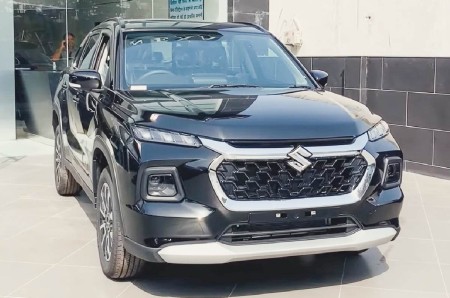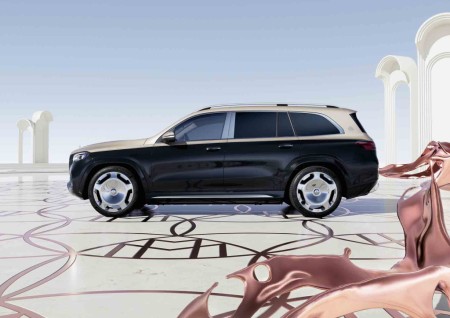Autocar expeditions Lap of Jordan Mercedes Benz E class and road trip
From structures that date back to the 2nd Century to modern-day skyscrapers, our journey through Jordan felt like travelling in a time machine.
Published On Jul 15, 2023 08:00:00 AM


Memories Aicha Luxury Camp in Wadi Rum has transparent domes for some star-gazing before you call it a night.
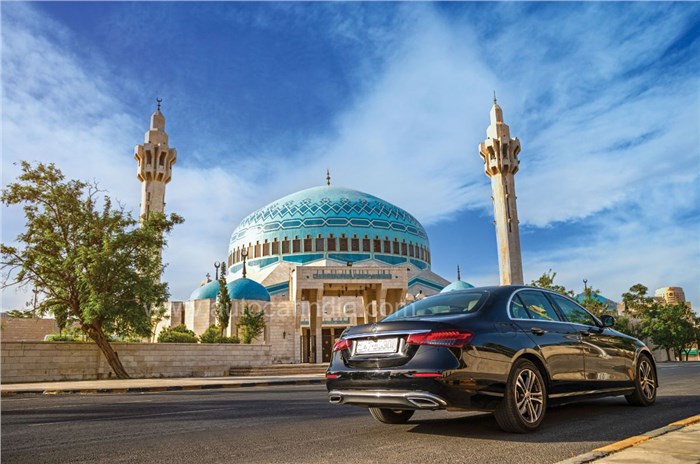
Downtown Amman features wide, smooth roads and modern landmarks such as the blue-domed King Abdullah mosque.
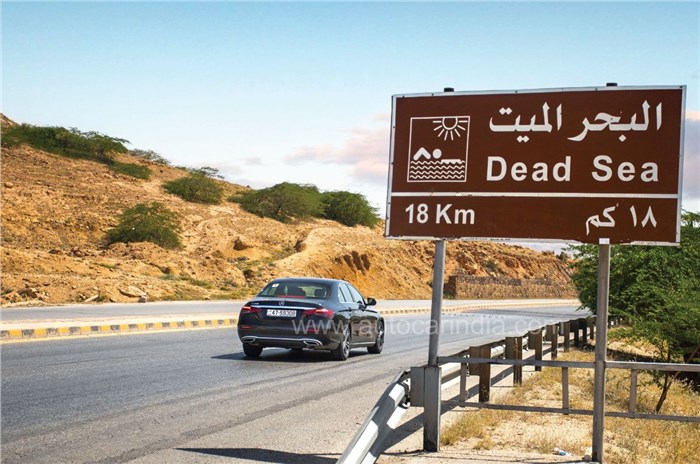
The descent to the lowest point on Earth is now lined with luxury hotels.
Driving a car in Amman increases brake wear by 30 percent,” says my good friend and fellow auto journalist Mohammad Zaro. “You have to change pads more frequently than in any other city.” Zaro’s observations might sound like meaningless trivia to most people, but it rather accurately sums up the nature of roads in his hometown. The roads of the Jordanian capital are shapedby the undulating topography of the city that has been built layer upon layer and over thousands of years on a cluster of seven hills.
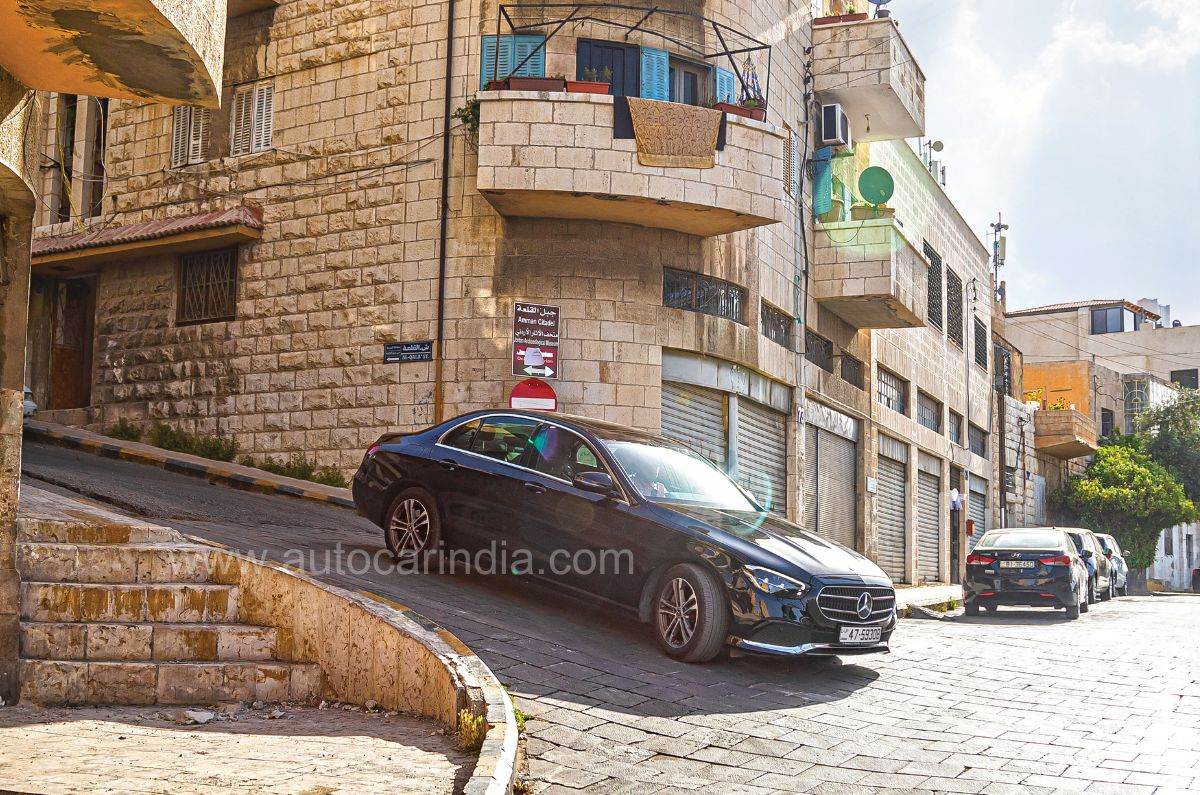
The E350 squeezes through narrow streets in the bustling old part of Amman.
I realise what Zaro means when I venture into the bustling old part of Amman. With its labyrinthine streets spread out like veins over the hilly terrain, you are constantly ascending and descending steep slopes. What you need in this kind of environment is a car with good torque and even better brakes, and thankfully the Mercedes-Benz E-Class I’m driving for the next eight days across Jordan has both. It’s the same E-Class we have in India except that this is the standard wheelbase model and my E350 petrol-spec gets the bigger 3.0-litre V6. From behind the wheel, you get the same twin 12.3-inch display panel that houses the latest MBUX infotainment system, so it’s easy to get familiar with the controls. And yes, it’s left-hand drive, which is always the biggest adjustment one makes when parachuting into countries that drive on the right (wrong for us) side.
Through the ages
Our first stop is the Citadel, the ruins of an ancient fortress perched on top of one of Amman’s many hills. The resourceful Anees Bawab, who runs the city-based Emilio Travel, suggests I ditch the spanking new E-Class and get on the bus instead with the rest of our group. He wants to save me the stress of driving through the narrow, congested streets that lead up to the historic monument. But, as they say, if you can drive in India, you can drive anywhere in the world and honestly, navigating through the heart of Amman is nowhere as chaotic as driving around the Red Fort in Delhi, or the Charminar in Hyderabad. I make good use of the E-Class’ 500Nm of torque and power up the steep, narrow road to the Citadel where I’m greeted by a fabulous view of the old city with the rugged Jabal al-Qal’a range as the backdrop. As impressive is the sight of the Jordanian flag, gently and proudly fluttering on the Raghadan flagpole, which, at 127 metres high, is among the world’s tallest.

The 2nd Century AD Roman amphitheatre is among Amman’s most famous landmarks.
You don’t have to be in Rome to do what the Romans do (or did), you can simply do that in the ancient city of Jerash, which is just under an hour’s drive from Amman (and about 3,800km from Rome!). It’s an easy drive to Jerash and there’s a huge parking lot just outside the entrance which makes it convenient to drive there yourself. In fact, except for the amphitheatre, I found parking at most tourist spots in Amman fairly easily, so if you want to be completely independent you could just hire a car and follow Google Maps to any of the city’s attractions. Guides are available for hire at these historical landmarks at a fixed rate, though a tip is expected at the end of the tour, so it’s all pretty well-regulated and tourist-friendly.
Jerash is a quiet little town, but its Roman ruins, which are considered to be the best preserved outside of Italy, give you a fair idea of the power that radiated from the heart of the Roman Empire.
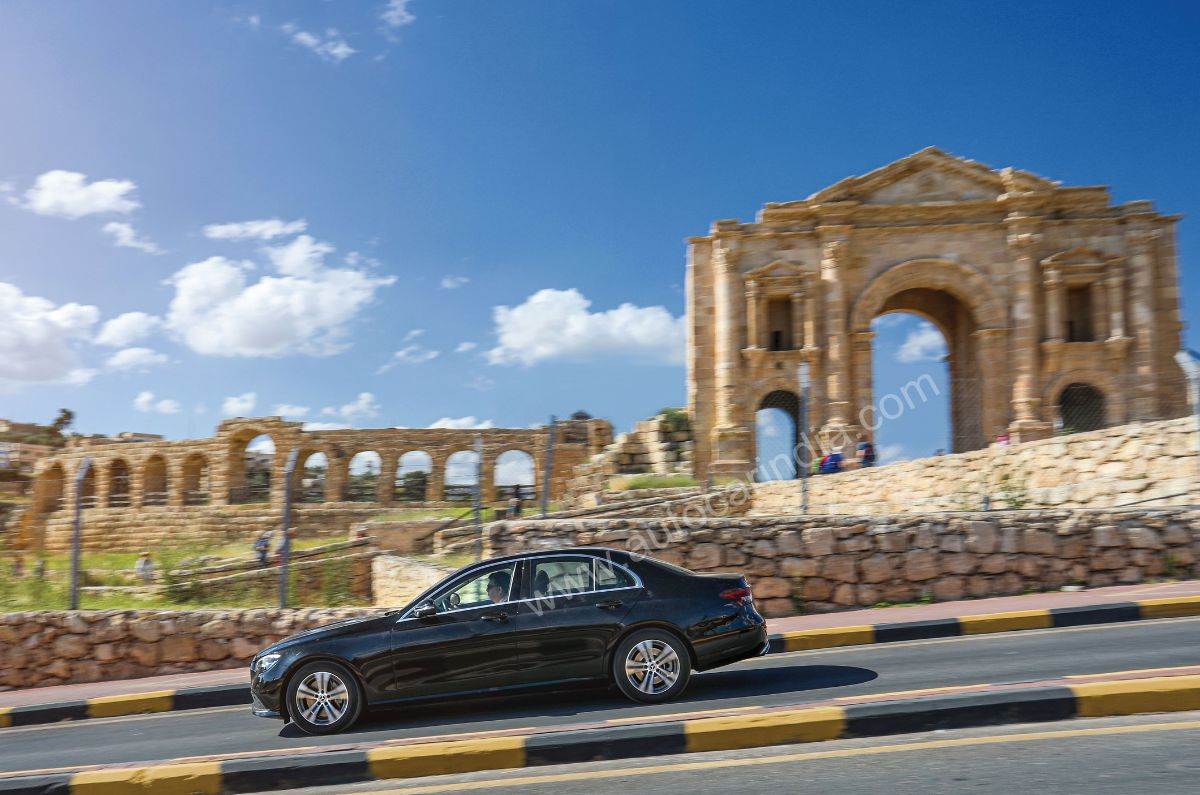
The Roman ruins in Jerash are considered to be the most well-preserved outside of Italy.
Entering the city through the triumphal Hadrian’s Arch (a great backdrop to shoot the E-Class) and walking through the ruins, along fluted columns and on streets still paved with original stones, you feel like a Roman, teleported back some 2,000 years when Jerash thrived as a prosperous Roman provincial capital. Wherever they went and whoever they conquered, the Romans left behind a lasting impression (and some magnificent selfie spots, too) with their favourite things in life: stadiums for sports, amphitheatres for their grand spectacles, and markets for their shopaholic tendencies. The Romans really knew how to have a blast and Jerash stands testimony to that. To atone for their hedonistic escapades, the Romans also built temples such as the Temple of Artemis, which exemplifies their architectural brilliance.

The E-Class with its ancestors, a 280SE W111 3.5 cabriolet and a W120 Ponton, at the museum.
Driving in fast-forward by two millennia into the 20th century, the E-Class arrives at the parking lot of the Royal Automobile Museum where it meets its ancestors among other cars. There’s an immaculately restored 280SE W111 3.5 cabriolet and a W120 Ponton parked at the entrance for a photo-op. Mercedes invented the car in 1886 and a lot of innovations that have since become landmarks in the auto industry. Hence, no museum can be complete without some of the milestone cars bearing the three-pointed star. But it’s not just the collection of cars through the ages that makes the Royal Automobile Museum a singular space. This one stands out as a one-of-a-kind car museum, thanks to its intimate connection with Jordan’s royal family. In fact, the late King Hussein was possibly the most car-crazy monarch in the world and the Royal Automobile Museum in Amman celebrates his passion. The museum showcases not only his personal collection but also sheds light on his wild automotive adventures. It took me some time to process the fact that he actually rallied the hardcore Group B Opel Manta, which is also on display!
The museum’s narrative does not just restrict itself to the king’s cars, but it also traces the history of the country during the period they were used. I’d heartily recommend it not just as a museum for car enthusiasts, but for anyone interested in the broader heritage of the country showcased through some truly historic automobiles.

The Royal Automobile Museum in Amman has an intimate connection with Jordan’s royal family.
Raja Gargour, the director of the museum and the man behind the finely curated display, has taken great care to meticulously document their history with extensive film footage that captures the royal family’s cars in action as part of a motorcade, or on duty during landmark state visits and diplomatic events. “King Hussein loved cars, but the story doesn’t start or end there. The story, in fact, started with the great Arab Revolt in 1916 and the beginning of the Hashemite Kingdom of Jordan. The museum uses cars to present the history of Jordan; there is no other place where cars are used to present the history of a country,” says Gargour.
Out of this world
After an action-packed two days in Amman, we are ready to hit the road to explore the rest of the country. I am joined by a tight-knit group of friends who have happily signed up for the pilot round of Autocar Expeditions, a new initiative to take people on unique self-driving trips all over the world . And what better way to see a country than in the luxury of a Merc? So we arranged five additional E-Classes for our group to travel in, all synced with radio communication. Our motorcade of black E350s was a head-turning sight wherever we went. All we needed were red lights and outriders to pass off as an official state convoy! My job for the next few days was to shepherd the convoy safely 800km across Jordan.
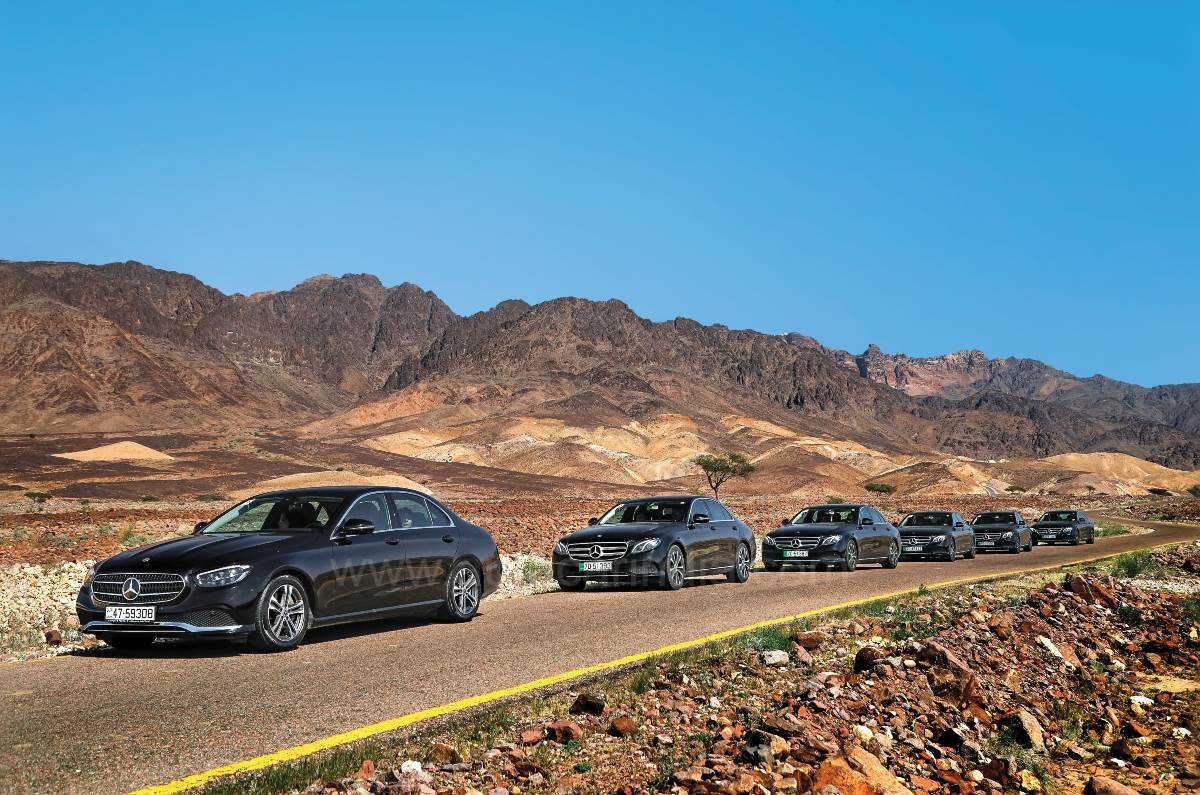
Our motorcade of black E350s was a head-turning sight wherever we went.
Leaving Amman is easy and the traffic is fairly light. Our drive out reveals the modern side of the city, which has well-marked, wide roads and a series of interchanges that seamlessly takes us to the Desert Highway. Our destination is Wadi Rum, around 320km away, so we budget for a leisurely five-hour drive with a stop in between. The E-Class finally has a chance to stretch its legs and we settle into a nice rhythm, cruising close to the 100kph speed limit. Jordanian drivers aren’t the most disciplined, especially when it comes to keeping lanes and overtaking from all sides is common practice, just like in India! The good thing is that traffic is fairly sparse so it’s easy for the convoy to stick together. Highways in Jordan are by and large smooth but sprinkled with rough patches and some nasty potholes, which the E-Class stoically soaks up.
The first refuelling stop just outside Amman reveals the price of fuel, which, at 1.2 Jordanian dinars or the equivalent of Rs 140 for a litre of 95 octane, is pretty steep. In fact, petrol prices in Jordan are among the highest in the Arab region. Jordan doesn’t have much oil of its own, and like most countries, heavily taxes every litre. The E350s, which are being driven leisurely, aren’t as thirsty as expected, and our car returned an average of 9.7kpl for the whole trip.
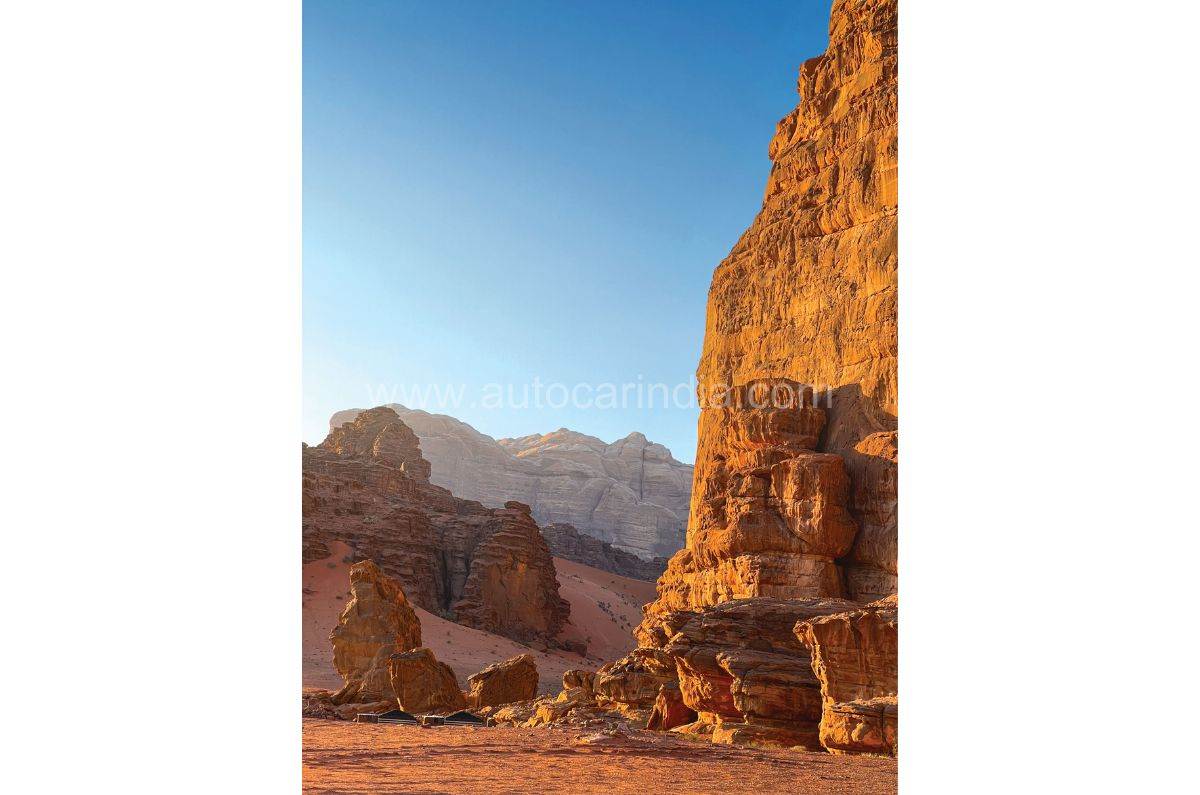
There’s no place on Earth quite like Wadi Rum. In fact, it’s more like Mars.
The scenery changes rapidly as Amman’s urban surroundings recede into the distance and views of vast, arid plains start to fill the windscreen. But it’s when you approach Wadi Rum that the landscape undergoes a mesmerising transformation. Breathtaking desert landscapes adorned with towering sandstone cliffs, freaky rock formations, deep canyons and rusty red sand pull in travellers from all over the world to Wadi Rum. There’s no place like this on Earth. In fact, you don’t think you’re on Earth. It’s more like Mars. Not surprising, then, that the Hollywood blockbuster The Martian and other popular sci-fi movies were shot right here.
Lunch in Wadi Rum is out of this world too – or rather under the earth. On the menu, among others, is a signature Bedouin dish, lamb slow-cooked in an underground oven. A pit surrounded by hot rocks or charcoal acts as a slow and consistent heat source that cooks the meat evenly and makes it incredibly tender and succulent, almost falling off the bone.
The food in Jordan is like a Middle Eastern adventure for your taste buds. We tried everything from the national dish mansaf (tender lamb served in tangy yoghurt sauce) and an assortment of delicious mezze dishes, to kunafa, a sweet pastry-like dessert that’s very popular in the country. It was a week of gastronomic indulgence and we left Jordan a couple of kilos heavier.
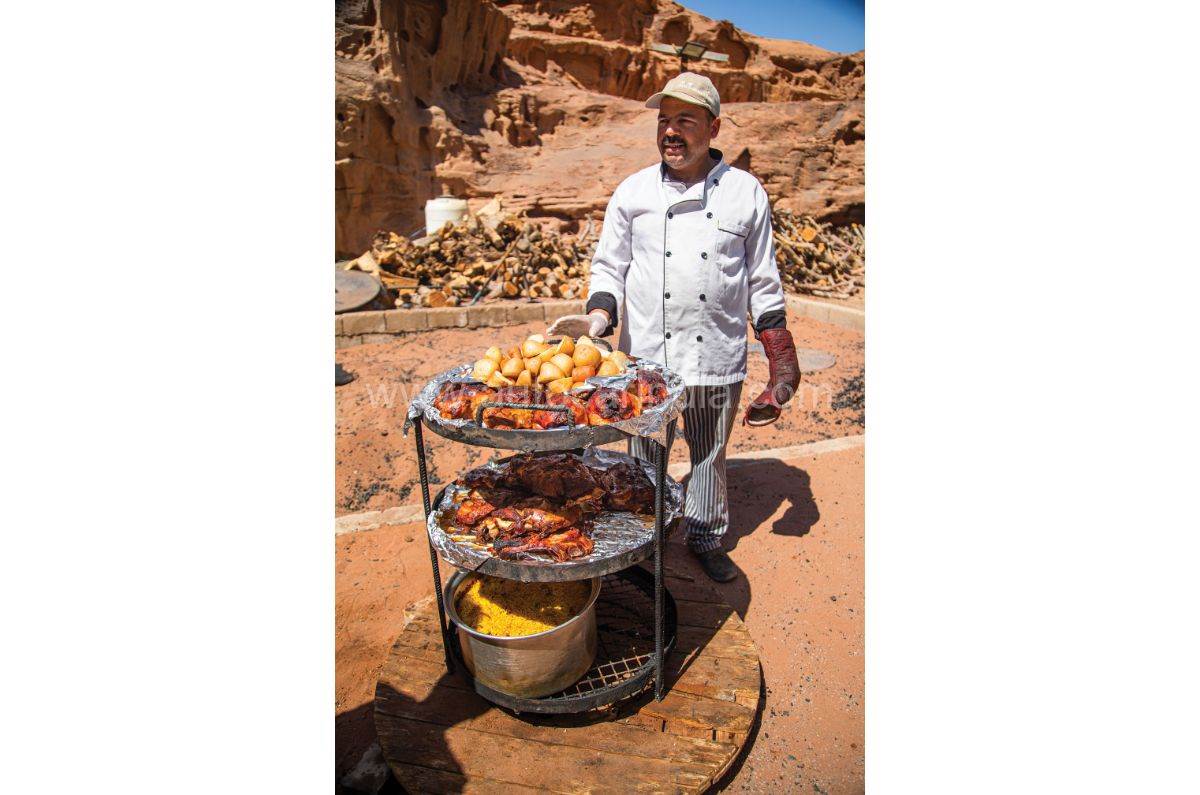
On the menu at Wadi Rum: lamb slow-cooked in an underground oven, a signature Bedouin dish.
After lunch, we swap our Mercs for battered 4×4 Hiluxes with open seating at the rear to explore Wadi Rum. We drive a fair bit into the desert, leaving behind all semblance of civilisation and are gobsmacked by the untouched beauty and vastness of the desert valley. Evening is the best time to experience Wadi Rum when the setting sun ignites the valley with a reddish-orange glow. As the sun dips below the horizon, our convoy of 4x4s heads to base camp, which that night is a luxurious tented accommodation at the Memories Aicha Luxury Camp. It is one of the few properties situated inside Wadi Rum and is completely isolated, with ‘bubble tents’ or transparent domes for you to sleep under a canopy of stars.
We depart the alien landscape of Wadi Rum the next morning for what is on the bucket list of everyone in the group, the ancient city of Petra, about 120km away. The short two-hour drive is incredibly picturesque so inevitably we get delayed stopping and shooting along the way. Soon after you leave Wadi Rum, the topography switches from an arid desert to a more varied landscape. The road meanders through vast stretches of desert plains, framed by distant mountains that rise majestically on the horizon. As you approach Petra, the terrain becomes hillier and the landscape takes a dramatic turn and the famous red rock cliffs and canyons that define this pink sandstone city come into view. Before you descend into the town, you can’t miss a sign, located prominently at one of the rest stops, which makes the bold claim of offering the “best view in the world.” Marketing gimmick or not, it certainly got us to stop and check out the panoramic view from this vantage point. The rugged desert plains, distant mountain ranges, and the red rock formations typical of this region, were worth stopping for, but it’s highly debatable if it’s the best view in the world.
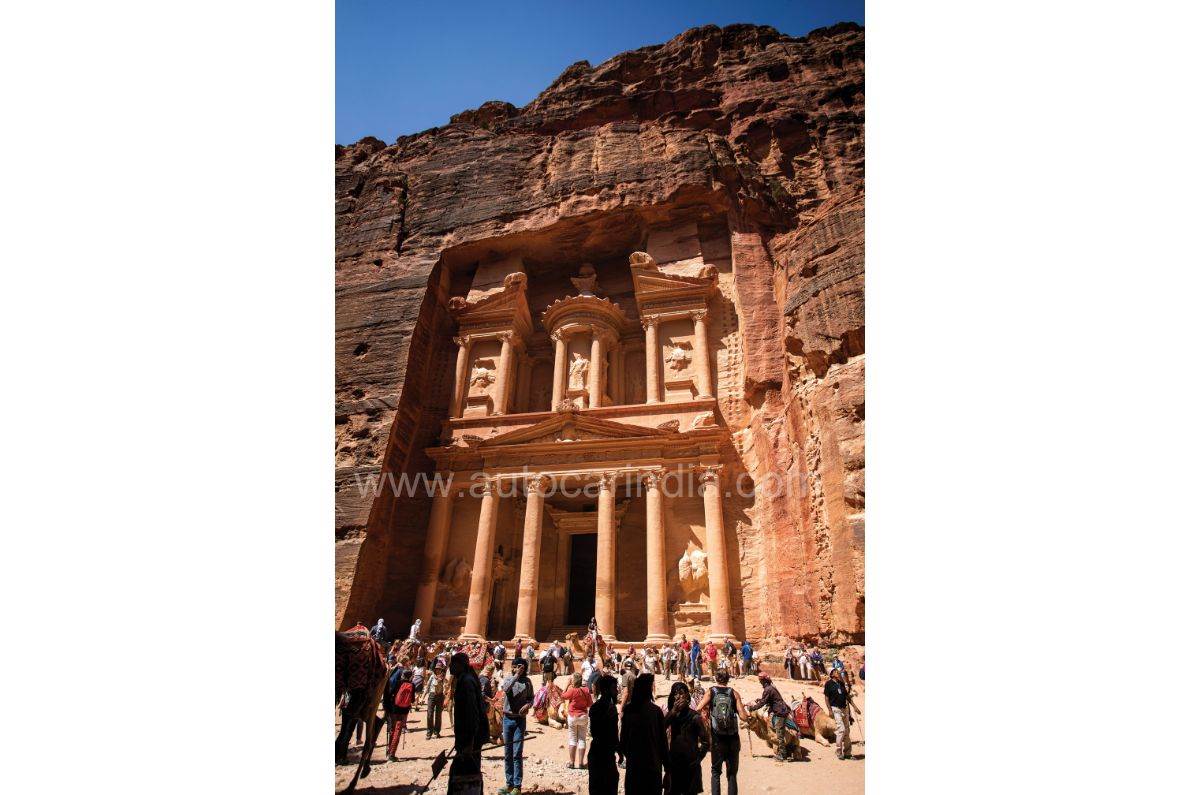
The first view of the grand facade of the iconic Treasury in Petra is a moment no visitor can forget
There can, however, be no debate about Petra, which reigns as the ultimate archaeological site in the world. Just the walk into Petra through the Siq, the gateway to the age-old city, is something you’ll never experience anywhere. Meandering down this narrow gorge that cuts through incredibly dramatic rock formations of different colours and hues is an adventure in itself. Every turn, which may have once hidden treasures, is now a great photo-op spot. These rocks still hold secrets of the ancient Nabatean civilisation that thrived here over 2,000 years ago. You can see a smattering of ancient sculptures and inscriptions carved into the rocks, but what is most amazing is the fine network of channels and conduits carved into the walls to divert rainwater to reservoirs and cisterns. It is part of a sophisticated and intricate water management system devised by the Nabateans who were possibly the greatest hydrologists in the world. As you emerge from the captivating Siq, the Treasury, Petra’s most iconic monument, simply hits you and this first view of the grand façade, hacked into the rock face, is a moment no visitor to Petra can forget.

The Nabateans were possibly the greatest hydrologists in the world.
It’s this mix of awe-inspiring architecture carved into equally dazzling sandstone cliffs and rock faces that makes Petra unforgettable. It’s a place that takes you back in time. And time is what you need in Petra, because the only way to get around it is on foot. You need to walk a minimum of five to six kilometres to soak in the atmosphere and see significant sites such as the Treasury, the Street of Facades, the Royal Tombs, and the Theatre. So, the most important thing to bring along is a comfortable pair of walking shoes and ending the day beating your personal Fitbit record.
Lows and highs
After a hot, tiring day in Petra, with every muscle aching in your weary legs, sinking back into the comfort of the E-Class was a welcome relief. Leaving Petra is as dramatic as entering it and the 150km road to the Dead Sea drops from around 800 metres above sea level to 430 metres below. That’s an elevation change of 1,230 metres and the descent to the lowest point on Earth, which cuts through barren mountains, is pretty steep and heavy on the brakes. Once you hit the plains, it’s a straight run to the Dead Sea, which slowly appears on your left. There’s very little traffic so you can hold a good speed, but you have to watch for unmarked speed breakers that suddenly pop out of nowhere.
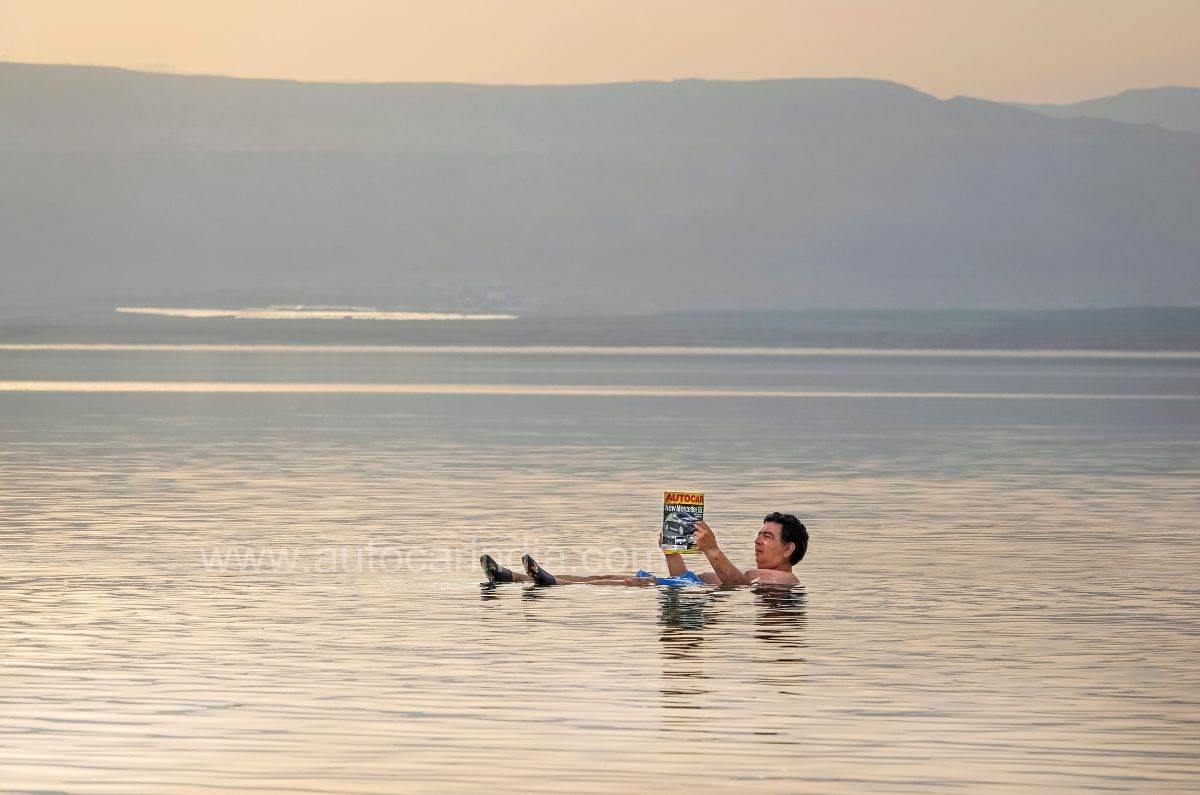
Relaxing in the Dead Sea is the perfect way to end to an action-packed Jordan trip
The last bit of the drive that runs alongside the eastern shore of the Dead Sea is also very picturesque. The Dead Sea’s azure hues and shimmering water contrast magnificently with the arid landscape that surrounds it.
And finally, we arrive at the Kempinski Ishtar hotel at the Dead Sea for two days of unwinding and enjoying the facilities at this luxury resort. Chilling out in the tranquil ambience of the Dead Sea is the perfect way to end a pretty hectic 800km drive across Jordan’s varied and tough terrain. Swimming in the Dead Sea in itself is a bucket list experience. The extreme buoyancy in the water gives you an extraordinary weightlessness that defies gravity. It’s a magical feeling being able to float with half your body out of the water and is unlike anything you’ve experienced before. The lowest point on Earth ended our Jordan drive on a big high.
Introducing Autocar Expeditions
For those of you who love driving as much as we do, Autocar India has launched Autocar Expeditions, a new division that curates road trips in exotic destinations. Our bucket-list experiences combine stirring drives to great places in great cars and an opportunity to interact with people from different cultures while you indulge in the freedom of the open road. Our finely curated road trips pick the best roads and stunning routes that take you to hidden gems and iconic landmarks. Whether you are looking for the rugged beauty of a mountainous terrain, a 4×4 adventure in the desert, or the serenity of the coast, our road trips offer something for every driving enthusiast.
We handle all the details, from meticulously planning your itinerary to selecting the best accommodation and local dining experiences. Our experts will lead you safely in a convoy, which will be backed up by service vehicles ready to take care of any situation.
To know more about Autocar Expeditions and our next road trip, write to: [email protected]
Also See:
Copyright (c) Autocar India. All rights reserved.
You may like:
